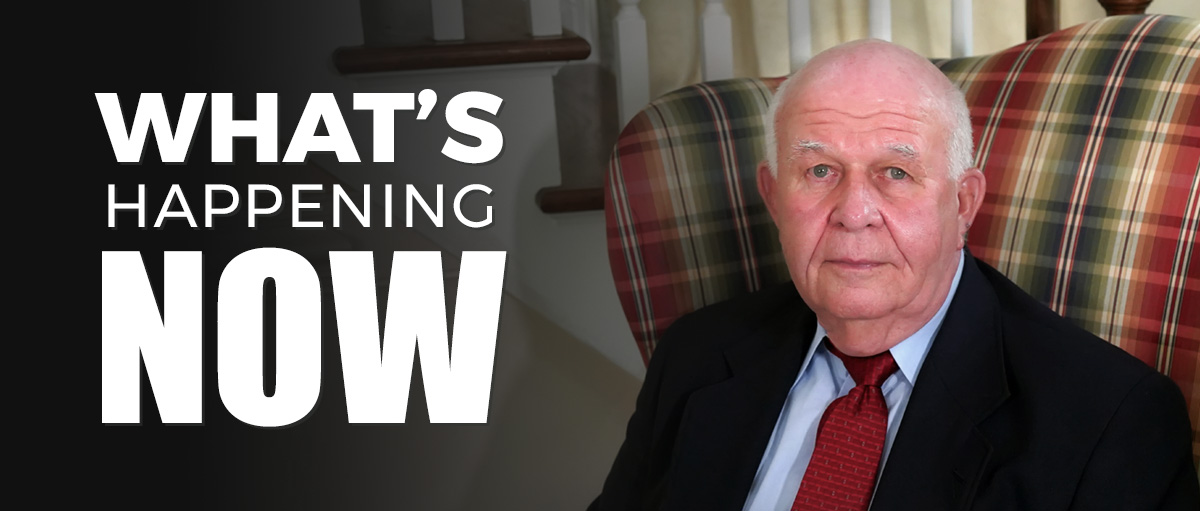Your Basic Needs: Food, Shelter and The TRUTH
Setting Limits for State Spending Growth
Publisher's note: The author of this post is Sarah Curry, who is Director of Fiscal Policy Studies for the Carolina Journal, John Hood Publisher.
RALEIGH The majority of the state's operations are funded through the General Fund. There are, though, some major components of the state's expenditure that are located outside the General Fund. In short, the General Fund amounts to around $20 billion, while total state spending amounts to approximately $51 billion.
The major differences between these two budgets are highways and the Highway Trust Fund, federal funding, and some debt service, which are all located outside the General Fund.
Federal funds account for more than 30 percent of the state's overall budget, and contrary to popular belief, "free" federal money is not really free. Every tax dollar Washington sends to North Carolina is a dollar taken from taxpayers in North Carolina and the other states.

Economists have found that federal subsidies to the states lead to higher state taxes and spending in the long run, because the federal "seed money" creates a demand for more government with current and future commitments.
Over the last few decades, the state's spending priorities have been public K-12 education and health and human services. These two items make up more than 60 percent of the state budget.
Within state government there are many areas that have been growing exponentially over the last decade. As the state continues to increase spending, the effectiveness of that spending is being questioned.
This has led some lawmakers to call for spending constraints that would limit increases in General Fund spending to a rate of inflation plus population growth, in addition to any voter-approved changes each year. Since 1980, North Carolina's population has grown an average of 1.7 percent, and inflation has increased an average of 2.2 percent annually. Concurrently, the General Fund has grown an average of 5 percent per year.
The overall goal of a spending constraint would be to allow for natural growth associated with population and inflation, while keeping overall spending under control. In addition, polls reveal that a majority of North Carolinians supports a cap on state spending using these parameters.
While government can fulfill useful roles in society by providing protection and public goods, there is a tendency for government to undertake unnecessary activities as it expands, which in turn diminishes economic freedom. The focus of the state's budget should be on core government services.
Go Back
RALEIGH The majority of the state's operations are funded through the General Fund. There are, though, some major components of the state's expenditure that are located outside the General Fund. In short, the General Fund amounts to around $20 billion, while total state spending amounts to approximately $51 billion.
The major differences between these two budgets are highways and the Highway Trust Fund, federal funding, and some debt service, which are all located outside the General Fund.
Federal funds account for more than 30 percent of the state's overall budget, and contrary to popular belief, "free" federal money is not really free. Every tax dollar Washington sends to North Carolina is a dollar taken from taxpayers in North Carolina and the other states.

Economists have found that federal subsidies to the states lead to higher state taxes and spending in the long run, because the federal "seed money" creates a demand for more government with current and future commitments.
Over the last few decades, the state's spending priorities have been public K-12 education and health and human services. These two items make up more than 60 percent of the state budget.
Within state government there are many areas that have been growing exponentially over the last decade. As the state continues to increase spending, the effectiveness of that spending is being questioned.
This has led some lawmakers to call for spending constraints that would limit increases in General Fund spending to a rate of inflation plus population growth, in addition to any voter-approved changes each year. Since 1980, North Carolina's population has grown an average of 1.7 percent, and inflation has increased an average of 2.2 percent annually. Concurrently, the General Fund has grown an average of 5 percent per year.
The overall goal of a spending constraint would be to allow for natural growth associated with population and inflation, while keeping overall spending under control. In addition, polls reveal that a majority of North Carolinians supports a cap on state spending using these parameters.
While government can fulfill useful roles in society by providing protection and public goods, there is a tendency for government to undertake unnecessary activities as it expands, which in turn diminishes economic freedom. The focus of the state's budget should be on core government services.
| Analysts: Millennial Voters Difficult To Motivate | Carolina Journal, Editorials, Op-Ed & Politics | Tillis Co-Sponsors Sentencing Reform Bill; Proposes Language Requiring Case-By-Case Review |
Latest Op-Ed & Politics
|
Pro death roundtable
Published: Wednesday, April 24th, 2024 @ 12:39 pm
By: Countrygirl1411
|
|
populist / nationalist anti-immigration AfD most popular party among young voters, CDU second
Published: Wednesday, April 24th, 2024 @ 11:25 am
By: John Steed
|
|
political scheme behhind raid on Mar-a-Lago
Published: Wednesday, April 24th, 2024 @ 9:16 am
By: John Steed
|
|
how many of these will come to North Carolina?
Published: Tuesday, April 23rd, 2024 @ 1:32 pm
By: John Steed
|
|
Barr had previously said he would jump off a bridge before supporting Trump
Published: Tuesday, April 23rd, 2024 @ 11:37 am
By: John Steed
|
|
Babis is leader of opposition in Czech parliament
Published: Tuesday, April 23rd, 2024 @ 10:28 am
By: John Steed
|
|
illegal alien "asylum seeker" migrants are a crime wave on both sides of the Atlantic
Published: Tuesday, April 23rd, 2024 @ 9:44 am
By: John Steed
|
|
only one holdout against acquital
Published: Tuesday, April 23rd, 2024 @ 9:01 am
By: John Steed
|
|
DEI now includes criminals?
Published: Monday, April 22nd, 2024 @ 8:33 pm
By: John Steed
|
|
Biden regime intends to force public school compliance as well as colleges
Published: Monday, April 22nd, 2024 @ 1:55 pm
By: John Steed
|
|
clamps down on oil drilling in Alaska
Published: Monday, April 22nd, 2024 @ 9:09 am
By: John Steed
|
|
plan put in place by Eric Holder
Published: Monday, April 22nd, 2024 @ 7:38 am
By: John Steed
|
|
prosecutors appeal acquittal of member of parliament in lower court for posting Bible verse
Published: Sunday, April 21st, 2024 @ 9:14 am
By: John Steed
|
|
Biden abuses power to turn statute on its head; womens groups to sue
Published: Friday, April 19th, 2024 @ 8:28 pm
By: John Steed
|
|
The Missouri Senate approved a constitutional amendment to ban non-U.S. citizens from voting and also ban ranked-choice voting.
Published: Friday, April 19th, 2024 @ 12:33 pm
By: Daily Wire
|
|
Democrats prosecuting political opponets just like foreign dictrators do
Published: Friday, April 19th, 2024 @ 10:58 am
By: John Steed
|























